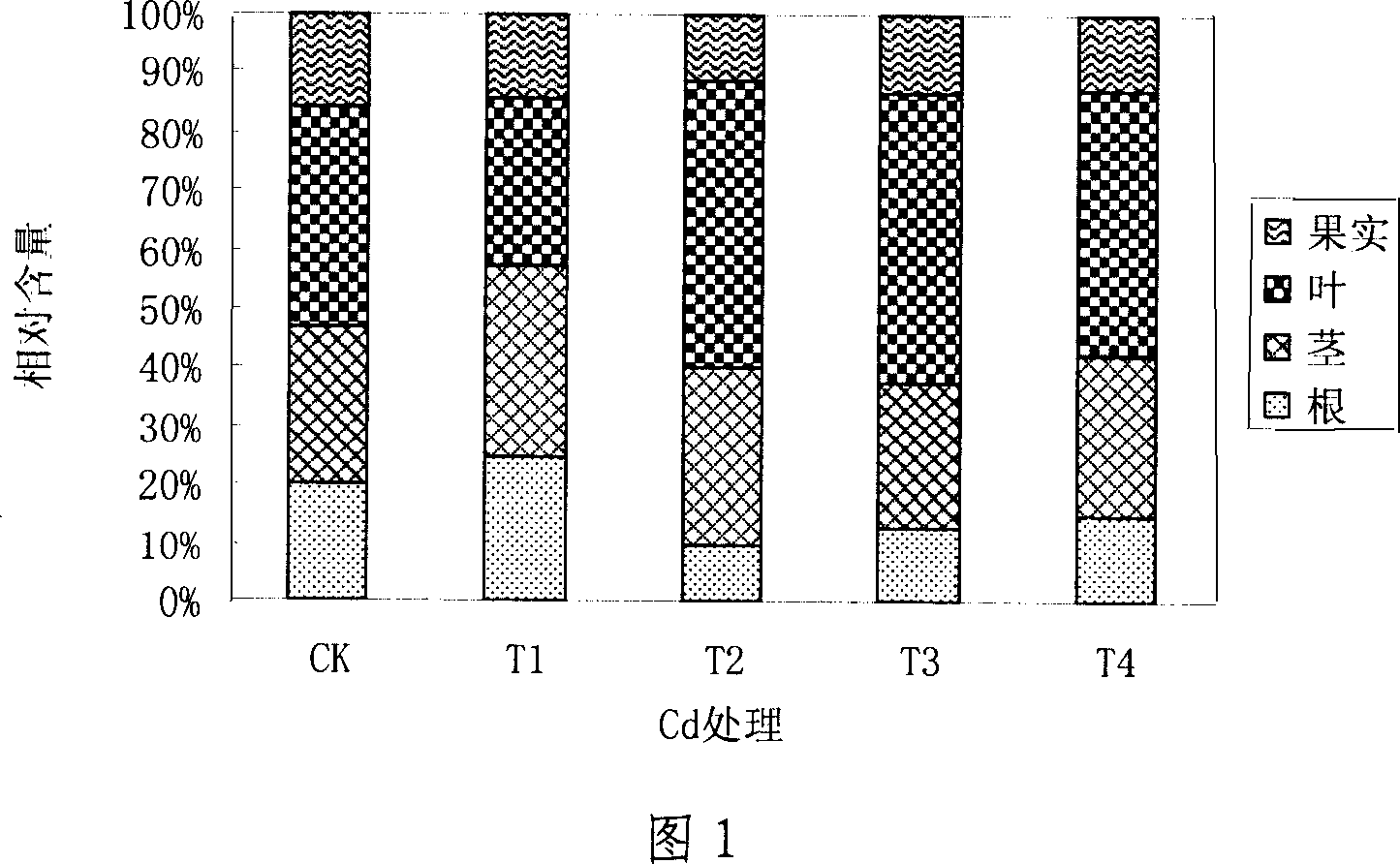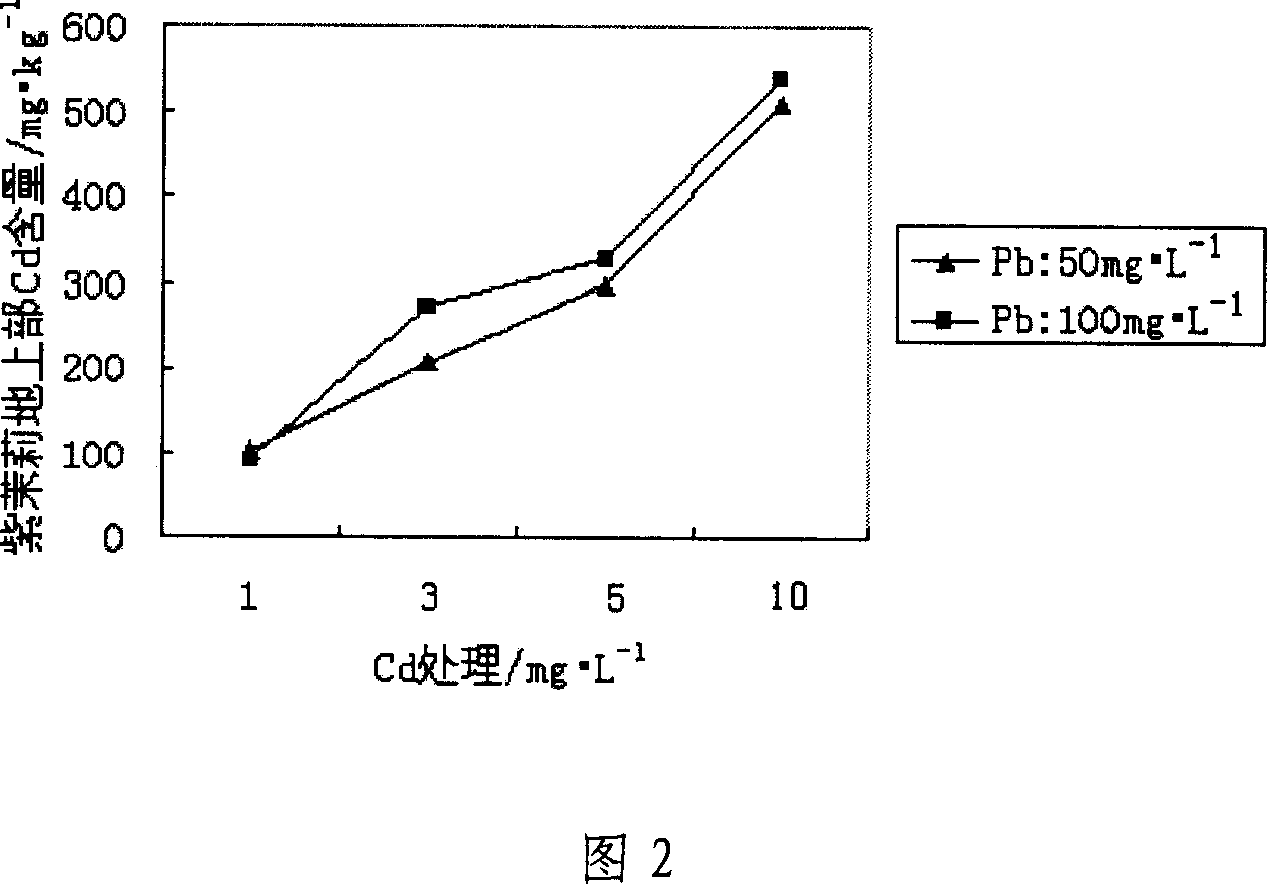Method for restoring soil polluted by heavy metal by using flower plant of common fouroclock
A technology for polluted soil and phytoremediation, which is applied in the field of phytoremediation of heavy metal polluted soil by using Mirabilis flowers, can solve the problems of limited types of hyperaccumulating plants, and achieves the effects of not causing secondary pollution, beautifying the environment, and having strong operability.
- Summary
- Abstract
- Description
- Claims
- Application Information
AI Technical Summary
Problems solved by technology
Method used
Image
Examples
Embodiment 1
[0019] Embodiment 1: Pot concentration gradient experiment
[0020] The potting experiment site is in the net room of Shenyang Institute of Applied Ecology, Chinese Academy of Sciences. The site is in the center of Shenyang. There are no pollution sources around the experimental site, and it is an area not polluted by heavy metals. The total annual radiation dose is 520~544KJ / cm 2 , frost-free period 127 ~ 164d. The potting test soil was collected from the surface soil in the pollution-free area of the Shenyang Ecological Station of the Chinese Academy of Sciences, and the soil type was meadow brown soil.
[0021] In this experiment, a total of 5 treatments were set up, which were the control (CK, without Cd), and the concentration of Cd: 10mg kg -1 (T1), 30mg·kg -1 (T2), 50mg·kg -1 (T3), 100mg·kg -1 (T4). The form of Cd added in the experiment is CdCl 2 2.5H 2 O, reagents of analytical grade. Take a certain amount of soil, air-dry it and pass it through a 4mm sieve...
Embodiment 2
[0029] Embodiment 2: Hydroponic experiment
[0030] Cd and Pb are the main heavy metal pollutants in the environment, and they often exist together in nature. Therefore, the Mirabilis jasmine seedlings were cultivated in the environment of Cd-Pb compound pollution by means of hydroponic experiments.
[0031] Robust and uniform one-month-old Mirabilis seedlings were selected and their roots were submerged in 0.1% KMnO 4 The solution is 10 minutes, which can sterilize and promote plant rooting, and then rinse off KMnO with distilled water 4 Afterwards, it was cultured in a 300mL Erlenmeyer flask. In the pre-cultivation stage, the Erlenmeyer flask only contained nutrient solution. In order to avoid the interference between ions, only basic nutrients were selected in this experiment. The composition of the nutrient solution is: 1.18g L -1 Ca(NO 3 ) 2 4H 2 O, 0.51g·L -1 KNO 3 After 5 days, when the seedlings have adapted to the hydroponic environment, prepare to change the so...
PUM
 Login to View More
Login to View More Abstract
Description
Claims
Application Information
 Login to View More
Login to View More - R&D
- Intellectual Property
- Life Sciences
- Materials
- Tech Scout
- Unparalleled Data Quality
- Higher Quality Content
- 60% Fewer Hallucinations
Browse by: Latest US Patents, China's latest patents, Technical Efficacy Thesaurus, Application Domain, Technology Topic, Popular Technical Reports.
© 2025 PatSnap. All rights reserved.Legal|Privacy policy|Modern Slavery Act Transparency Statement|Sitemap|About US| Contact US: help@patsnap.com



